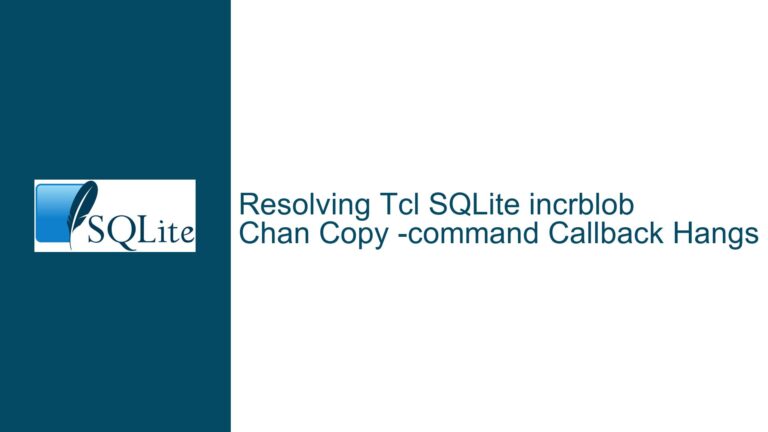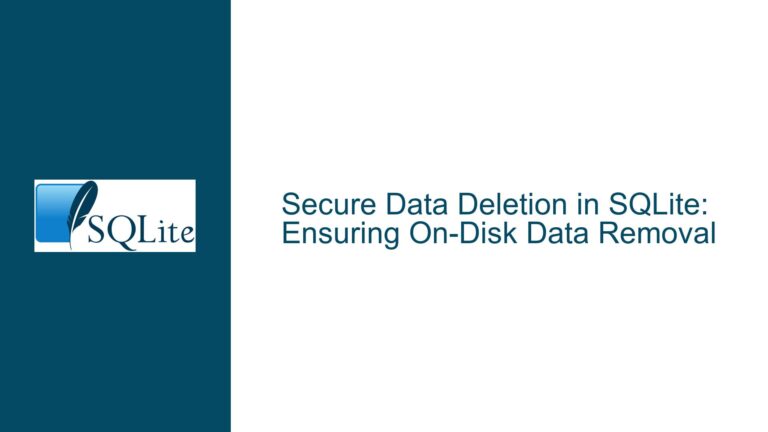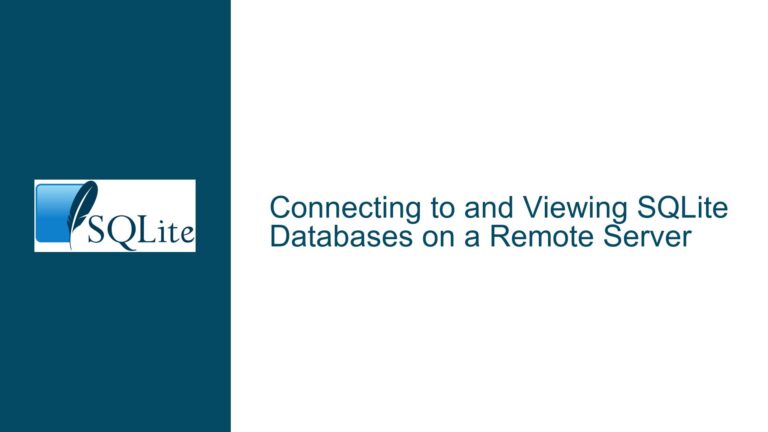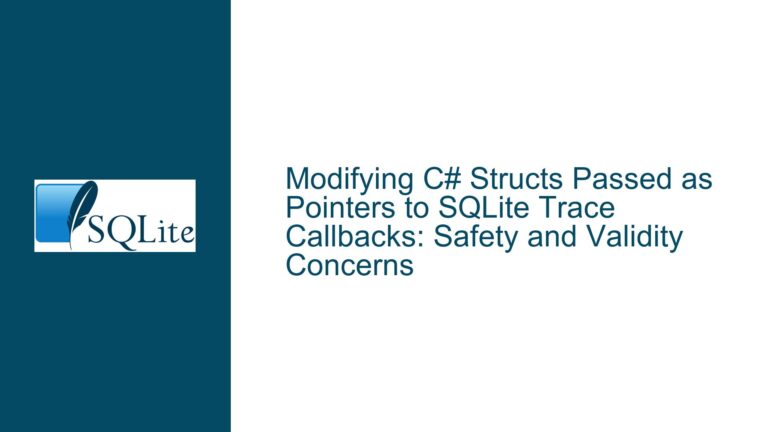Handling NULL xSize in SQLite3 Custom Allocators and Avoiding Memory Alignment Pitfalls
Memory Allocation Override Limitations in SQLite3 and Alignment Risks Core Challenge: Implementing Custom Memory Methods Without xSize Support SQLite3 allows developers to override default memory allocation routines by defining a custom sqlite3_mem_methods structure. This structure includes function pointers for xMalloc, xFree, xRealloc, and xSize. The xSize method is intended to return the size of a…









